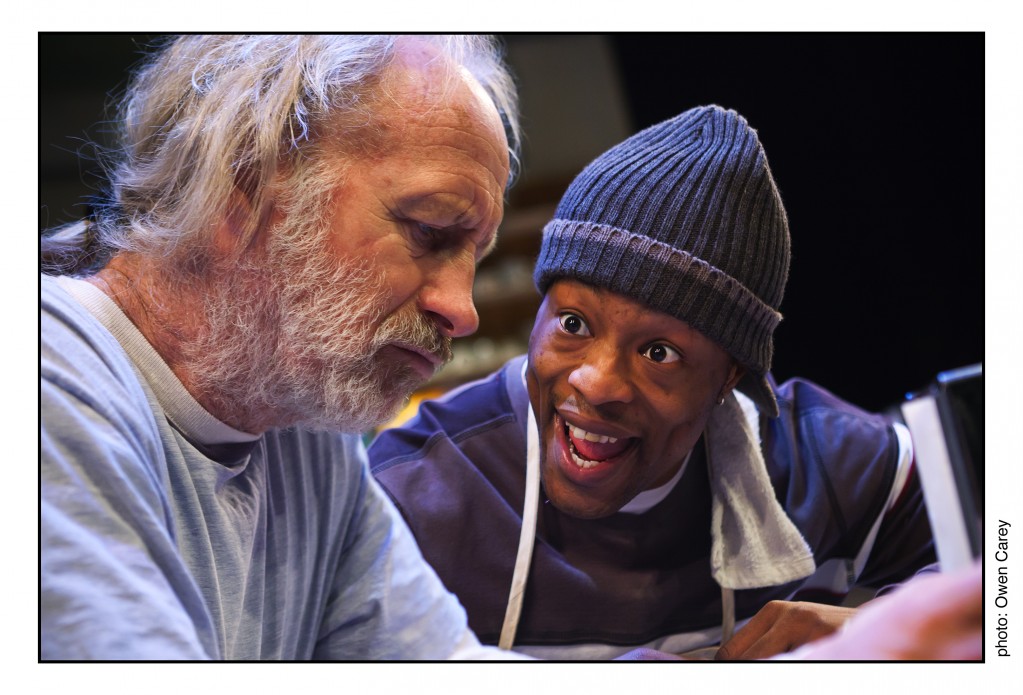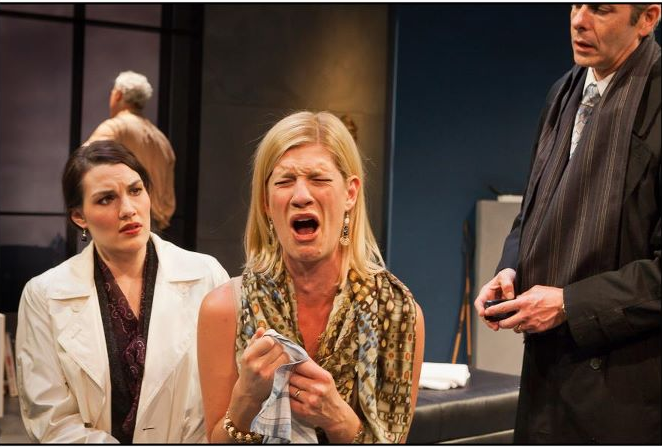
By Bob Hicks
With PICA’s TBA new-arts fest, Music Fest NW and the kickoff of the regular fall arts season, it was a hectic weekend in Puddletown. So Marty Hughley, The Oregonian’s ace theater and dance guy, asked me to pitch in and review God of Carnage, Yasmina Reza‘s little free-for-all at Artists Rep. Not a bad assignment, all in all. Funny what a little playground punch between kids can turn into when the adults get involved. My brief print review is in this morning’s paper. You can read the more expansive online version at Oregon Live.
Barry Johnson has also filed his review at Oregon Arts Watch, and Willamette Week’s Ben Waterhouse shouldn’t be far behind: He was in the house on Saturday night.
*
My old friend Bernie Weiner was a longtime theater critic for the San Francisco Chronicle, and, as the salesmen say in The Music Man, he knows the territory. So when he takes time out to send a tip, I pay attention.
This is what he sent the other day: not sure if you’ve ever seen dan hoyle perform (he’s geoff hoyle’s son), but he’s wonderful. just in case you’re interested, he’ll be doing his “real americans” show (based on conversations he had with ordinary americans, not all of whom were friendly) in portland 9/6-11-6.
The Real Americans also opened over the weekend, at Portland Center Stage. Rich Wattenberg’s review for The Oregonian is here.
I’d known this show was coming up and figured I’d catch it, but I didn’t know Dan Hoyle was Geoff Hoyle’s son. Geoff is a veteran physical-theater guy who’s maybe best-known for his stretches in Cirque du Soleil and as the original Zazu in the Broadway version of The Lion King. But I remember him best, and most fondly, as the clown Mister Sniff, one of the lynchpins with Bill Irwin of the funky and magnificent Pickle Family Circus, which both Bernie and I covered many years ago (Bernie more often, because the Pickles were part of the San Francisco home team). The splendor of Cirque du Soleil more or less killed popular interest in the Pickles, who were a quasi-hippie, quasi-touring European acrobatic troupe. But I absolutely loved the Pickles’ spirit, which was: be amazed by what’s right in front of your face. (Several Pickles, by the way, including Hoyle, Irwin, and fellow clown Larry Pisoni, played townsfolk in Robert Altman’s idiosyncratic movie version of Popeye.)
*
Also from The Oregonian, I ran this review on Friday of Tamarind Touchstones, an exhibition of 61 lithographic prints made over the past half-century by the Tamarind Institute, which began in Los Angeles and moved in 1970 to Albuquerque. It’s a very good show, with work by people you know (Josef Albers, Roy De Forest, Kiki Smith, Louise Nevelson, Robert Colescott, Richard Diebenkorn, Jim Dine, Ed Ruscha) and probably a few you don’t. It’s in the prints and drawings galleries downstairs from the main entrance, and it’s worth your time.
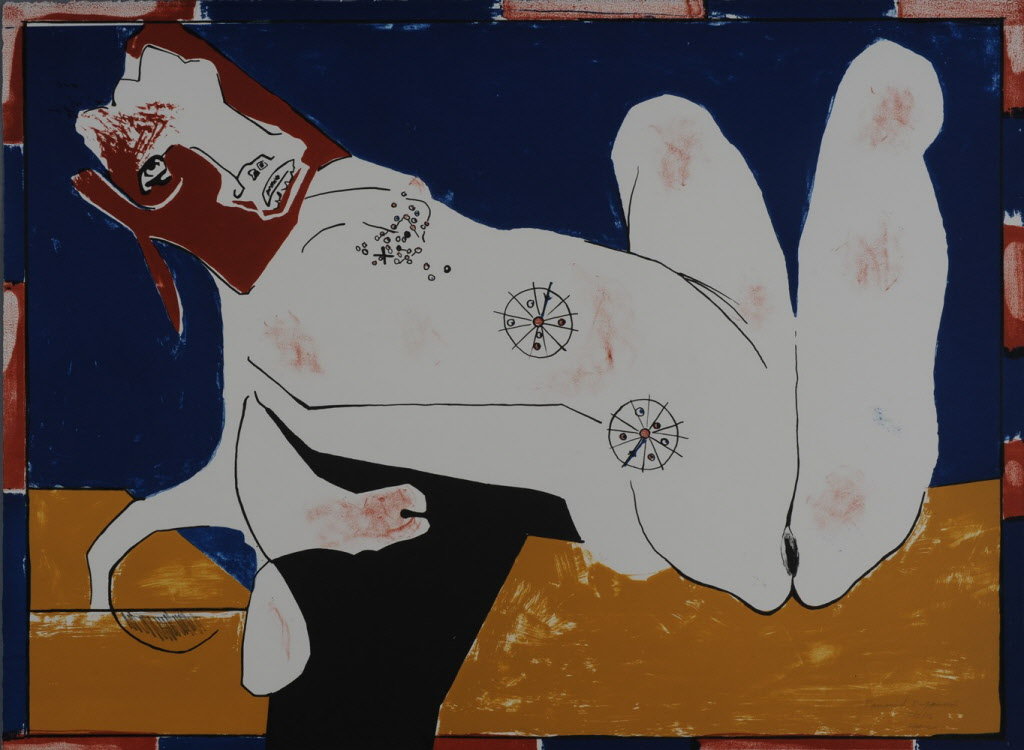
PHOTOS, from top:
- From left: Trisha Miller, Patrick Dizney (background), Allison Tigard and Michael Mendelson in “God of Carnage” at Artists Rep. Photo: Owen Carey.
- David Hare, “Cronus Hermaphrodite,” 1972. “Tamarind Touchstones” at Portland Art Museum. Courtesy Tamarind Institute.
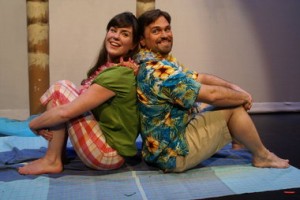 In my essay Gay Marriage, beach-blanket Bard: elitism for the masses over at Oregon Arts Watch, I try to sew it all together in a discussion about Standing on Ceremony: The Gay Marriage Plays at Artists Rep and the beach-blanket Much Ado at Northwest Classical Theatre Company.
In my essay Gay Marriage, beach-blanket Bard: elitism for the masses over at Oregon Arts Watch, I try to sew it all together in a discussion about Standing on Ceremony: The Gay Marriage Plays at Artists Rep and the beach-blanket Much Ado at Northwest Classical Theatre Company. Blaine Truitt Covert/OBT
Blaine Truitt Covert/OBT Still. Of course No Man’s Land is a play, but in its distillation of psychological and philosophical themes and its virtual abandonment of plot, which seems to have been dropped unceremoniously through a trap door in the stage floor, it takes on the musically suggestive qualities of dance. And of course Carmen is a ballet. But as Bizet and his opera librettists, Henri Meilhac and Ludovic Havely, devised it (they were working from an earlier novella by Prosper Merimee, who in turn may have been working from a narrative poem by Alexander Pushkin) the story is indisputably theatrical, a twisting and exciting tale of action and big moments leading thrillingly to tragedy. Stowell chose to keep those elements — indeed, Bizet’s music almost demands it — creating an uncompromisingly theatrical ballet. Fonte, working with Stravinsky’s jagged and compellingly modern score and incorporating a good deal of Fokine’s original movement style, took an opposite approach, distilling almost to the point of pure dance Petrouchka‘s sad folk tale of a puppet who comes to life, falls in love, and is murdered. (It’s a tough fate: all Pinocchio got was a long nose and a short stint in a whale’s belly.)
Still. Of course No Man’s Land is a play, but in its distillation of psychological and philosophical themes and its virtual abandonment of plot, which seems to have been dropped unceremoniously through a trap door in the stage floor, it takes on the musically suggestive qualities of dance. And of course Carmen is a ballet. But as Bizet and his opera librettists, Henri Meilhac and Ludovic Havely, devised it (they were working from an earlier novella by Prosper Merimee, who in turn may have been working from a narrative poem by Alexander Pushkin) the story is indisputably theatrical, a twisting and exciting tale of action and big moments leading thrillingly to tragedy. Stowell chose to keep those elements — indeed, Bizet’s music almost demands it — creating an uncompromisingly theatrical ballet. Fonte, working with Stravinsky’s jagged and compellingly modern score and incorporating a good deal of Fokine’s original movement style, took an opposite approach, distilling almost to the point of pure dance Petrouchka‘s sad folk tale of a puppet who comes to life, falls in love, and is murdered. (It’s a tough fate: all Pinocchio got was a long nose and a short stint in a whale’s belly.) Tom Prochaska, So Much To Do, Froelick Gallery
Tom Prochaska, So Much To Do, Froelick Gallery

 Portland Taiko. Rich Iwasaki/2009
Portland Taiko. Rich Iwasaki/2009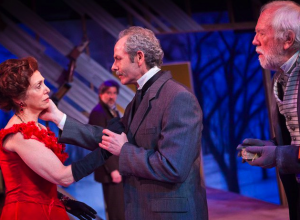 There isn’t much story to The Cherry Orchard, but there are themes, counter-themes, motifs. It’s chamber music, and the way we hear it can be startlingly different from production to production, depending not just on our own life experiences (interpreting Chekhov relies to an extreme on what the audience brings to it) but also on the emphases of interpretation on the stage: Do we concentrate on the cello tonight, or the bassoon? In truth, I suspect that even more so than ordinarily, every member of the audience sees a different play when watching Chekhov.
There isn’t much story to The Cherry Orchard, but there are themes, counter-themes, motifs. It’s chamber music, and the way we hear it can be startlingly different from production to production, depending not just on our own life experiences (interpreting Chekhov relies to an extreme on what the audience brings to it) but also on the emphases of interpretation on the stage: Do we concentrate on the cello tonight, or the bassoon? In truth, I suspect that even more so than ordinarily, every member of the audience sees a different play when watching Chekhov. Nay, nay, not just a bicycle. An electric three-wheeler, with neat little wire basket in the rear, a vehicle fit for the odd grocery trek and the regular coffee-shop run. Could it be? Might Mr. Scatter don a plaid neck scarf and houndstooth riding cap and sport about town at a dashing 17 mph, shouting wild-eyed imprecations at crows and chihuahuas to clear out of his path if they value wing and limb? Might this be fitting familial payback for a garden suddenly lurking with warty-nosed painted gnomes?
Nay, nay, not just a bicycle. An electric three-wheeler, with neat little wire basket in the rear, a vehicle fit for the odd grocery trek and the regular coffee-shop run. Could it be? Might Mr. Scatter don a plaid neck scarf and houndstooth riding cap and sport about town at a dashing 17 mph, shouting wild-eyed imprecations at crows and chihuahuas to clear out of his path if they value wing and limb? Might this be fitting familial payback for a garden suddenly lurking with warty-nosed painted gnomes? Ah, one can dream, as Jack does in the play
Ah, one can dream, as Jack does in the play 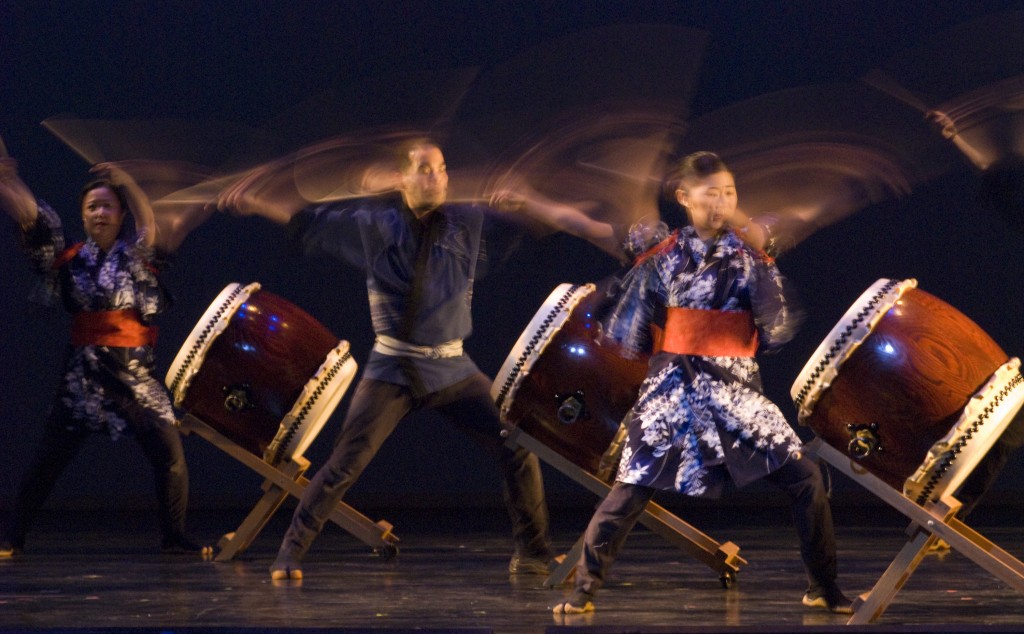 © Rich Iwasaki 2008
© Rich Iwasaki 2008 One performance coming up is particularly close to me, because I serve on the board of
One performance coming up is particularly close to me, because I serve on the board of 
